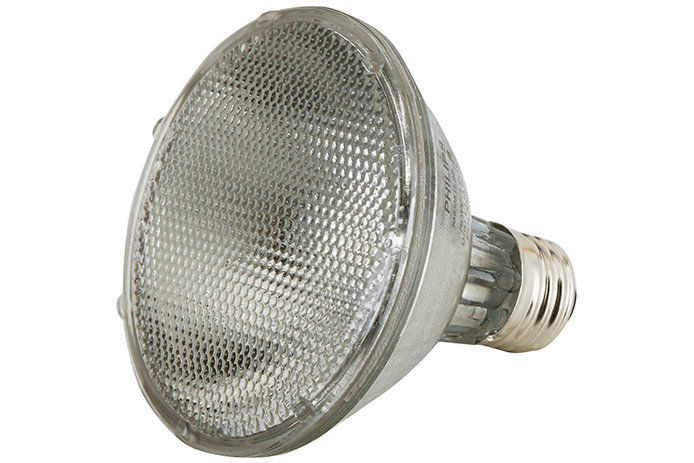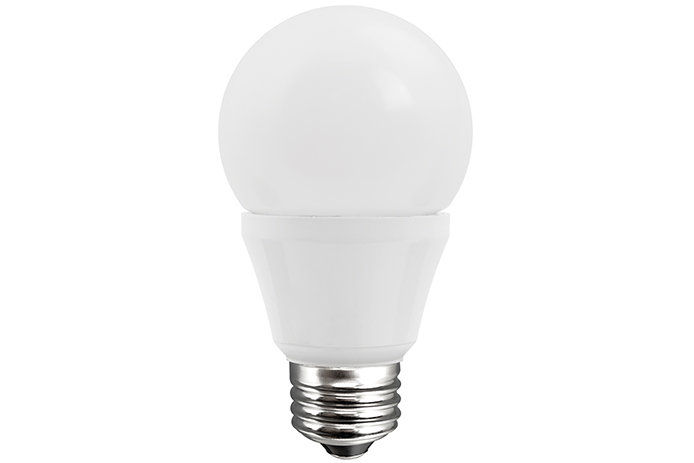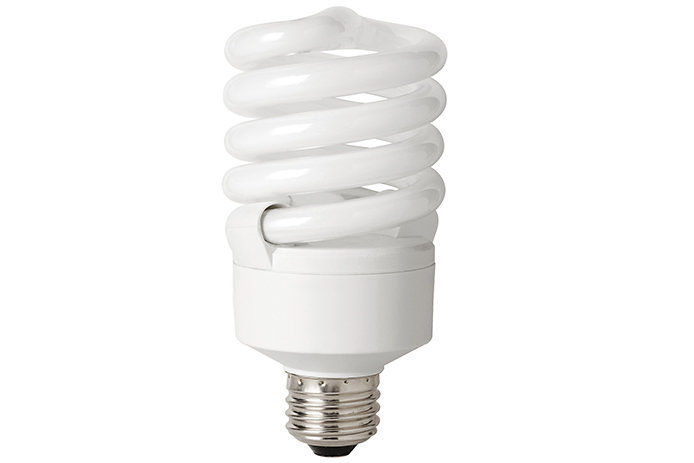Incandescent bulbs are the best type of lightbulbs for:
- Garage and outdoor use
- Closet
- Laundry rooms
- Decorative Lighting and occasional use

Are you looking for ways to change your lighting scheme? It's helpful to explore the different types of light bulbs so you know exactly what you're shopping for. Whether you're choosing light bulbs for different light fixtures you already own, or for a brand new fixture, you'll need to know which type is best.
You might think a lightbulb is a pretty standard "fixture" in today's world—after all, they've been around for over a hundred years. But technology has greatly advanced since Thomas Edison invented the first incandescent light bulb. Today we’ve become more aware of the importance of energy conservation and the impact of waste. With more lighting options than ever before, it’s helpful to know the different types of lightbulbs. Our light bulb buying guide will help you understand how to choose the best light bulb for any situation in your home.
When you shop for lightbulbs, you probably have several considerations, including cost, style, and bulb brightness. You may also consider the different color temperatures (warmer or cooler light) and where they will go in your home. There are different types of light bulb colors and casts to get the effect you really want.
When you explore the lights in your home, it's also helpful to understand what the lightbulb numbers mean. What are watts and lumens, and what's the difference?
Lumens refers to the output of light from a bulb. If you want a brighter bulb, you want higher lumens. Watts refers to the unit of power. That means a watt measures how much power (electricity) the bulb needs each second. Higher wattage, however, doesn’t necessarily mean that a bulb will be brighter.
Wattage has become more obsolete as the market has shifted toward energy-efficient bulbs like CFL and LED options. These newer types of lightbulbs may use fewer watts while actually emitting more lumens (and brighter light).
So, if you want to know how bright a lightbulb will be, look for higher lumens. One lumen is about the same amount of light as a small candle. A Christmas tree bulb is around 8 lumens. Most household lights are between 300 and 1000 lumens (but some are stronger).
Four main types of light bulbs are on the market today: incandescent, halogen, CFL, and LED. Which one is best for your particular situation? Here's a breakdown of the 4 types of light bulbs you'll find at your local Do it Best.

When you think of a lightbulb, chances are, incandescent lights pop into your mind. For many years these were the most commonly used light bulbs. They’re available in different strengths ranging from 40-110 watts. They feature a standard glass bulb and several different types of lightbulb bases. An incandescent light bulb works as electricity heats the filament in the bulb. As the filament begins to glow, it casts bright light.
Incandescent bulbs typically emit a warm, yellow-white light. These common types of light bulbs last for about a year (depending on the frequency of use). You find incandescent lightbulbs in lamps, car headlights, flashlights, and decorative household lighting. These come in a variety of light bulb shapes and sizes, as well as types of glass (including frosted, clear, and colors). Often, these offer the most natural light.

Halogen lightbulbs are similar to incandescent lightbulbs because they both use filaments. In both light bulb types, power heats the filaments until they glow, but halogen lights use less energy due to the halogen cycle.
As an incandescent bulb runs, tungsten evaporates from the burning filament. Over time, this causes blackening on the bulb and decreases the light that the bulb emits. The halogen cycle eliminates tungsten filament evaporation. As tungsten reacts with the halogen gas inside the bulb, some of it returns to the filament. Not only does this cycle extend the bulb's life, but it also prevents the glass's blackening.
Halogen bulbs produce a white light that’s similar to daylight at noon. These types of lights are often used in recessed lighting, under-cabinet lighting, pendant lights, and lighting for workspaces in the home. Halogen bulbs last about a year on average. Even though these lightbulbs are more energy efficient than incandescent bulbs, they can still warm quickly and become quite hot, making them not suitable for certain areas of the home.

LED lights have taken off in popularity over the last decade, and for a good reason—LED lightbulbs are one of the most energy-efficient lighting options available and require less power than traditional light bulbs. LED stands for "light-emitting diode." The head from LED bulbs is absorbed into a heat sink, which keeps the lightbulb cool to the touch while helping save energy.
Unlike incandescent lightbulbs, LEDs don't burn out. Eventually, over time they experience lumen deprivation, and the light output decreases upwards of 30%, indicating it’s time for a replacement. LED bulbs use less electricity than other types of lightbulbs. These lightbulbs are also silent, last longer, are mercury-free, and won't emit ultraviolet or infrared light. Because LED lights are an energy-efficient choice, many carry the Energy Star symbol. LED lights last up to 10 years with the standard use of three hours daily.
The drawback of LED lights is that they are directional. They only light in a specific direction, as opposed to multidirectional lightbulbs that light in all directions.

CLF lightbulbs are also an energy-efficient choice. CLF stands for compact fluorescent light bulbs. CFL bulbs give off a warm, color-correcting tone. Light is produced when electrodes at the end of each tube containing argon and mercury gases react. The reaction produces UV light that becomes visible when it strikes the phosphor coating inside the bulb.
CFL lightbulbs are often less expensive than LED lights and also last about ten times longer than incandescent lightbulbs. CFL lights contain mercury, so they require careful disposal. They can also have a slight light-up delay, taking about 30 seconds to become fully lit.
As you try to select the right lightbulb for your home, you might also hear or read about warm vs. cool lighting. What's the difference between warm and cool lighting?
The terms warm lighting and cool lighting don’t refer to the temperature of the bulbs or the heat given off during use. Instead, it refers to the color tones of the lighting. The human eye sees yellow and golden light as "warmer." And white and blue light as "cooler" color tones. Often, warm lighting is more flattering and softer. It tends to make people’s skin appear healthier, and it can be easier on the eyes. Cool lighting, on the other hand, is good for detailed tasks. Although it can be a little less flattering, some people prefer it in areas like the bathroom or kitchen and workspaces like a home office or garage.
In addition to the different light bulb types, there are also different bases. Be sure to look at the base types required for your light bulb sockets to select the best light bulb for your needs.
There are the following types of lightbulb bases:
No matter which type of lightbulb you are looking for, we have you covered at Do it Best!
Since each type of lightbulb produces a different lighting effect, you may want to work with several different styles to fit specific areas of your home. We offer a wide selection of light bulbs online and in our stores. When you need to brighten your life, Do It Best has the right light bulb for the job!
While do-it-yourself projects can be fun and fulfilling, there is always a potential for personal injury or property damage. We strongly suggest that any project beyond your abilities be left to licensed professionals such as electricians, plumbers, and carpenters. Any action you take upon the information on this website is strictly at your own risk, and we assume no responsibility or liability for the contents of this article.